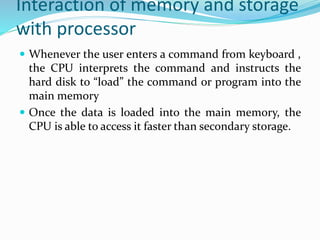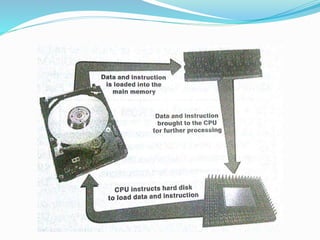This document discusses computer memory and the memory hierarchy. It begins by introducing primary and secondary memory. Primary memory, like RAM, is used to process data and instructions directly, while secondary memory, like hard disks, is used for long-term storage. It then describes the memory hierarchy, with internal processor memory and cache at the top for fastest access, primary/RAM memory next, and secondary disk storage at the bottom. The document focuses on RAM, describing its purpose to temporarily store active data and programs, and how it must be refreshed to maintain data in dynamic RAM unlike static RAM.















